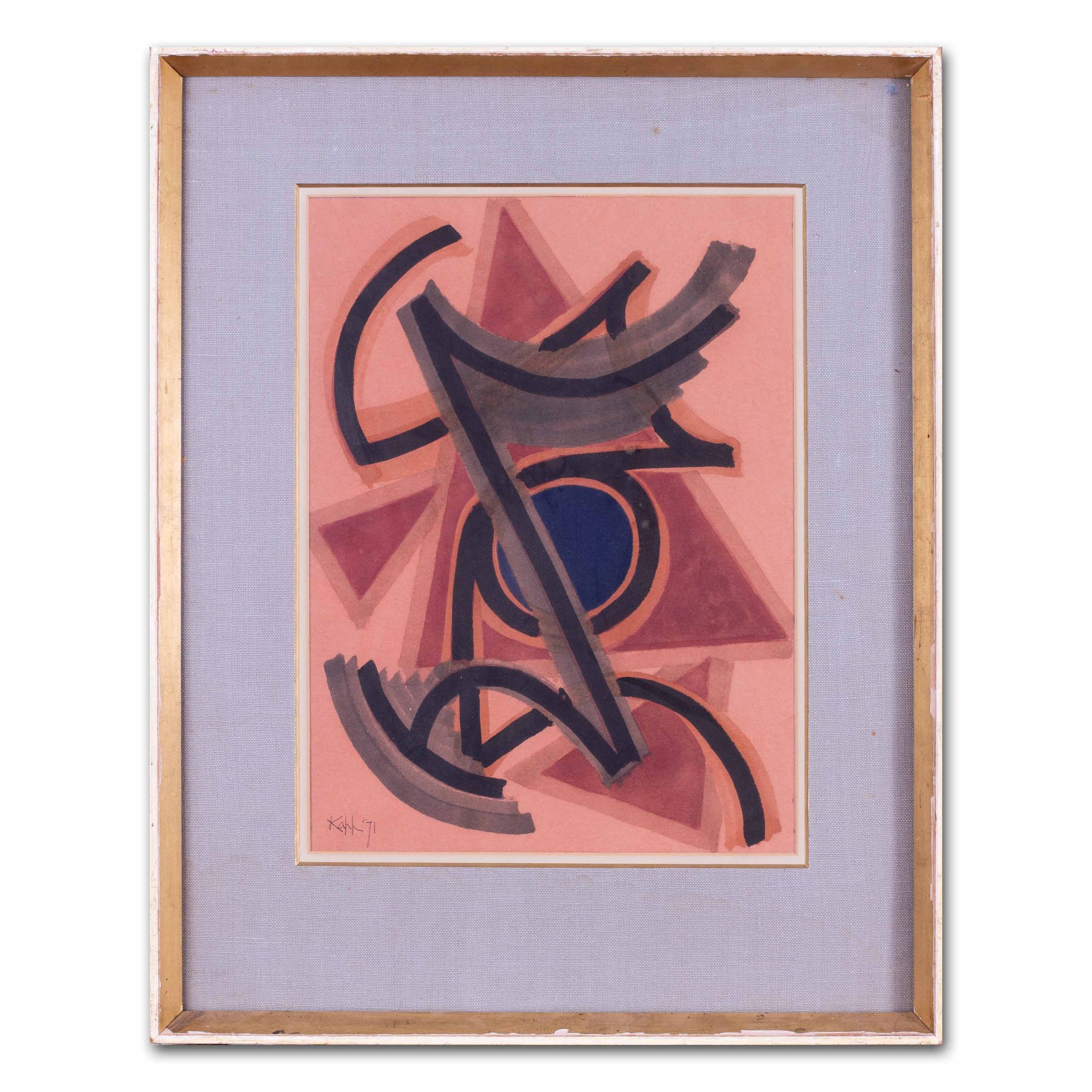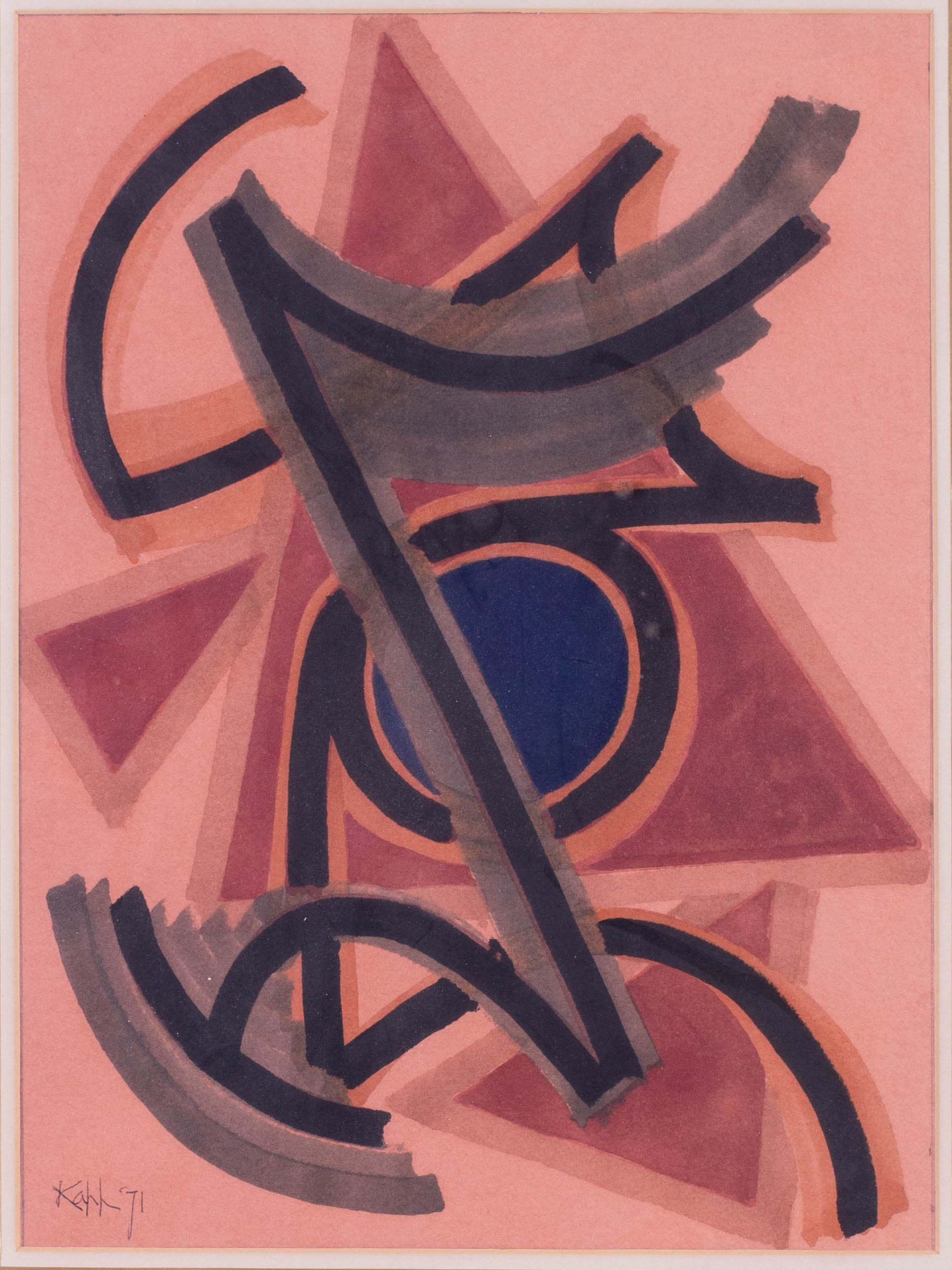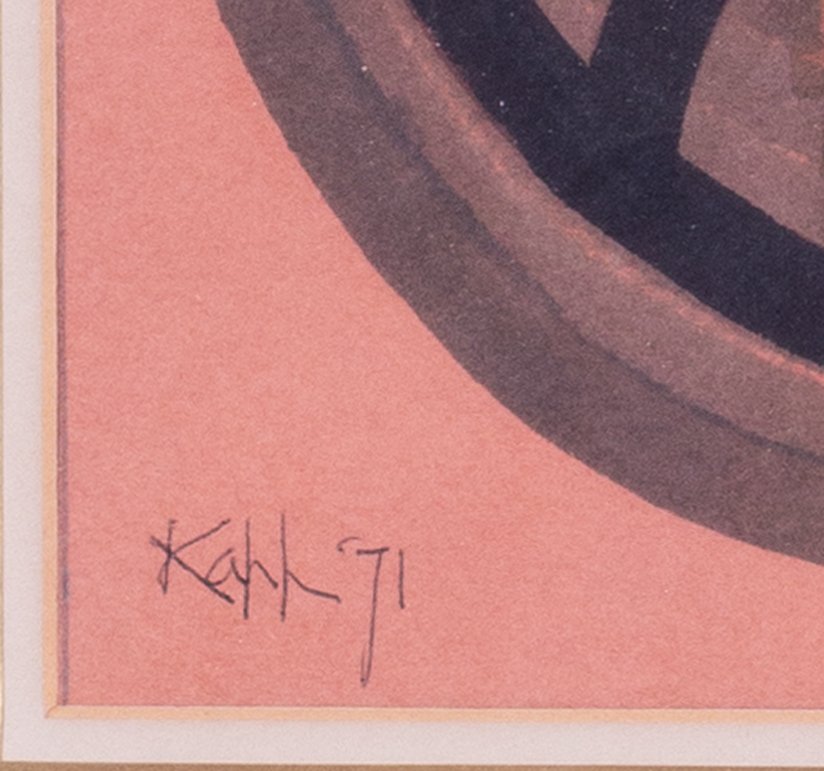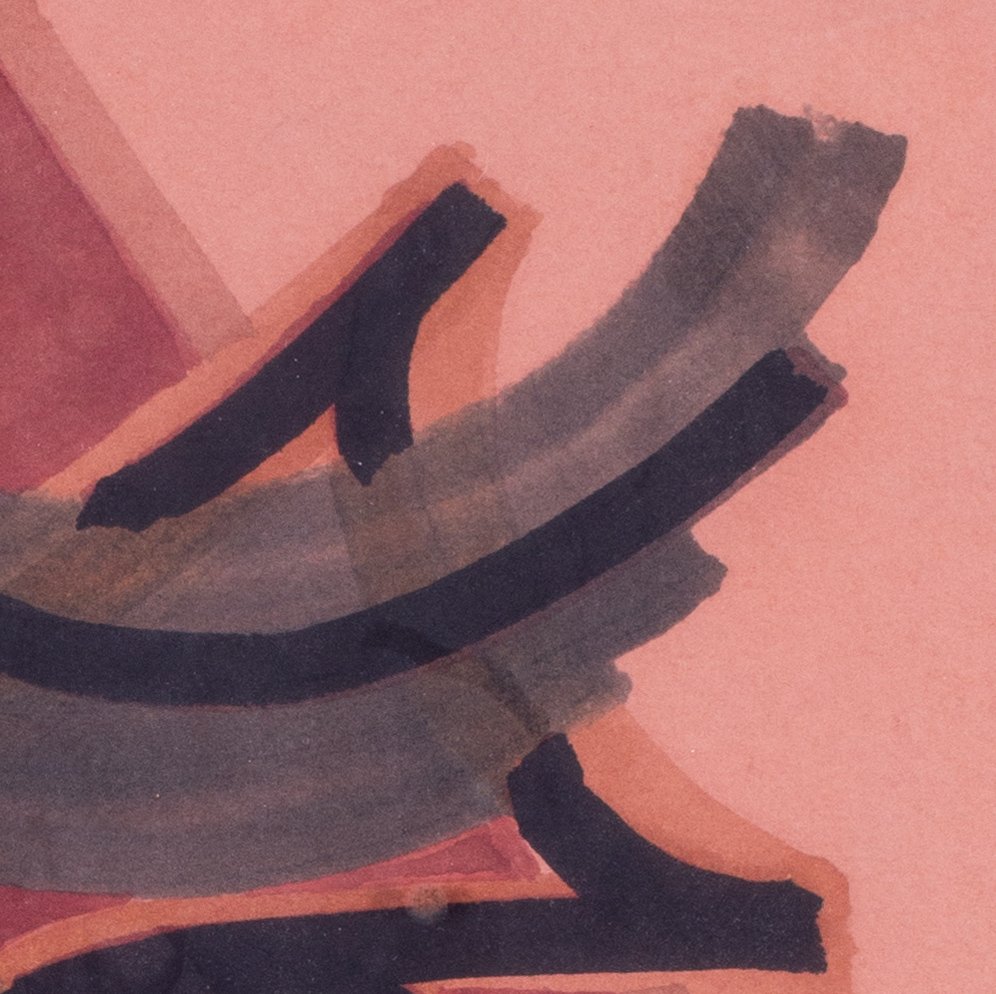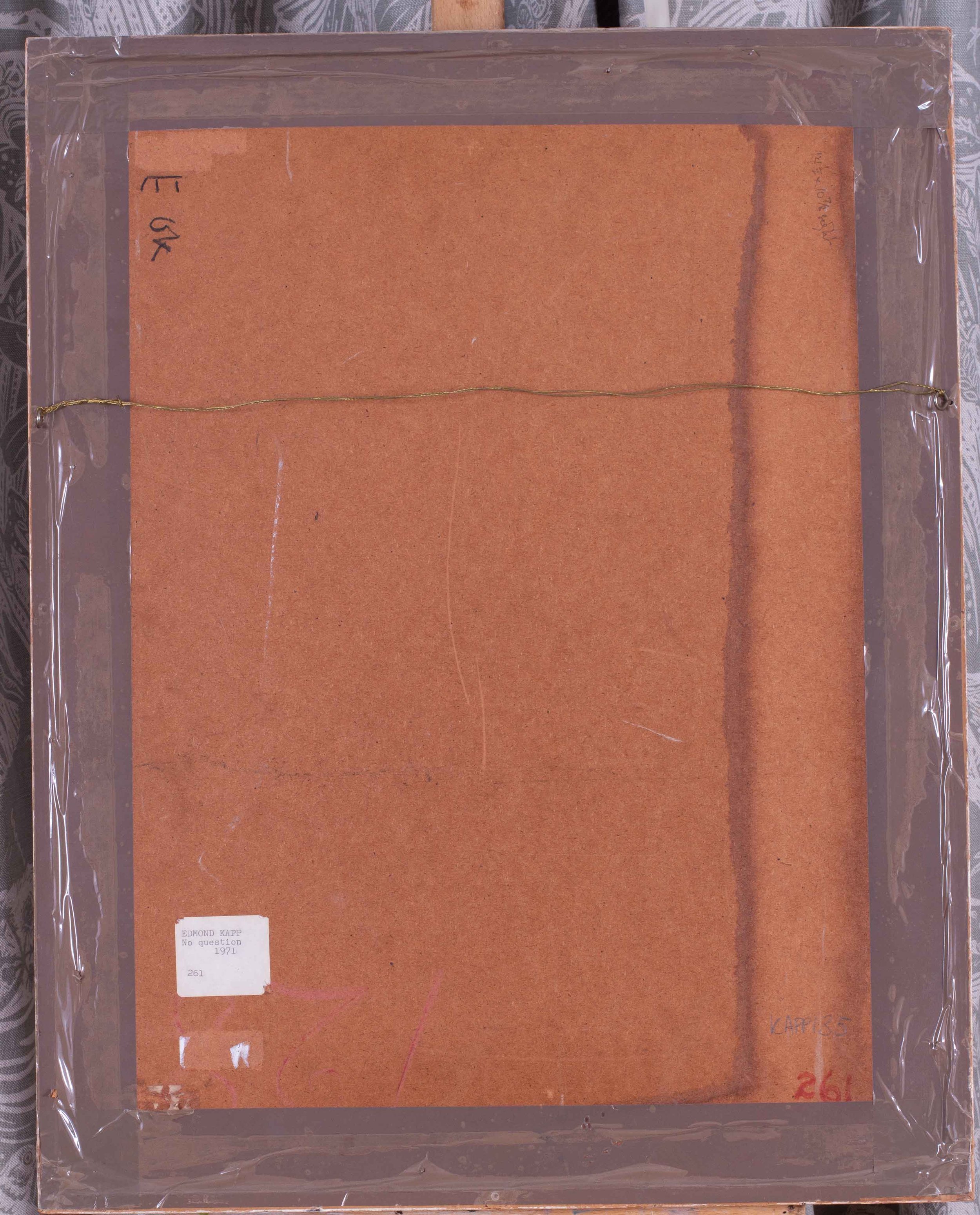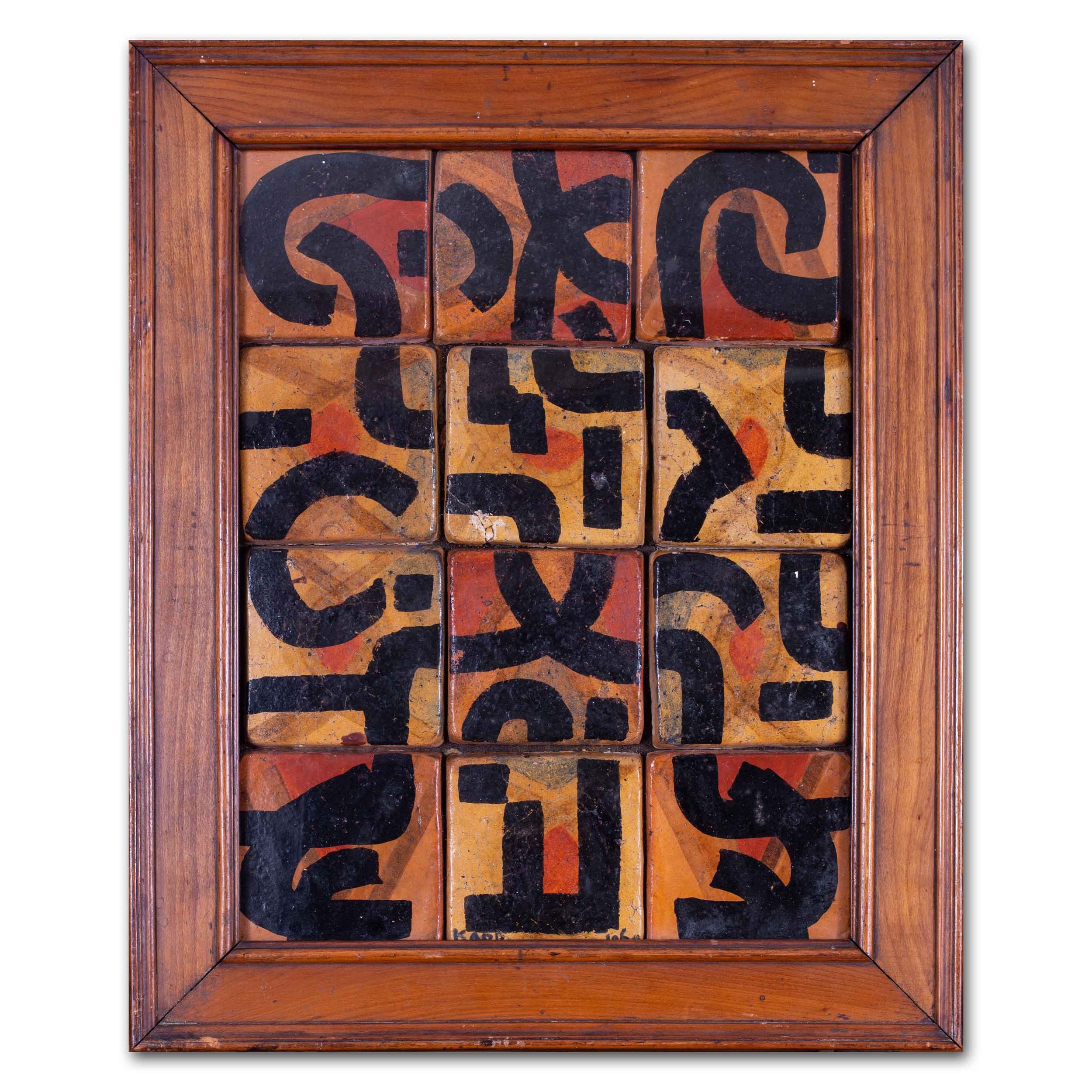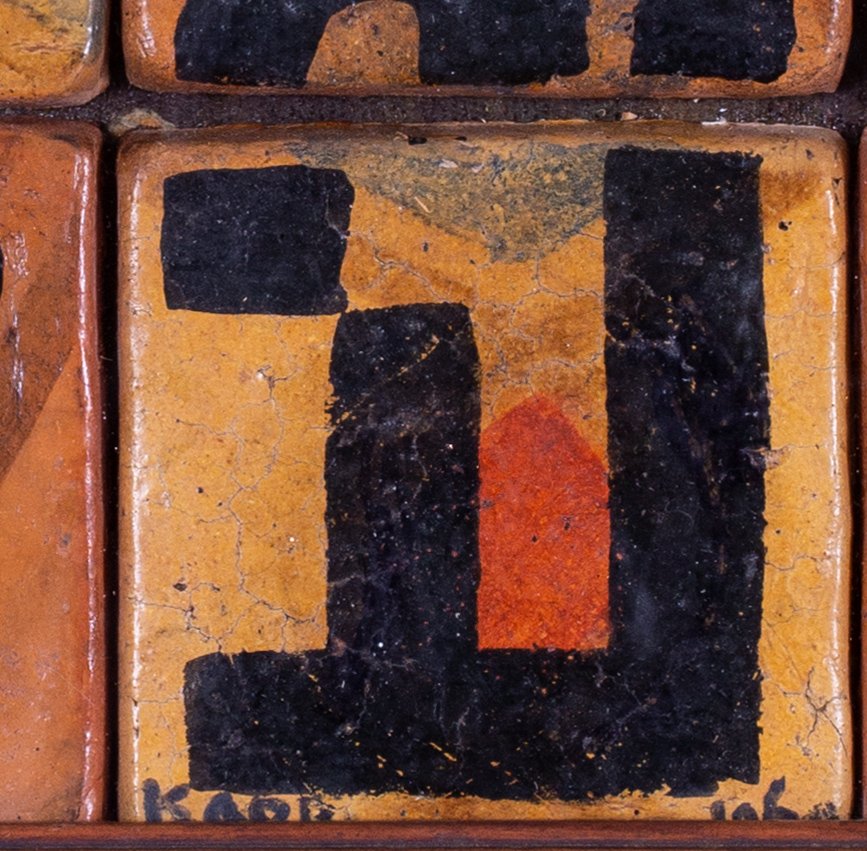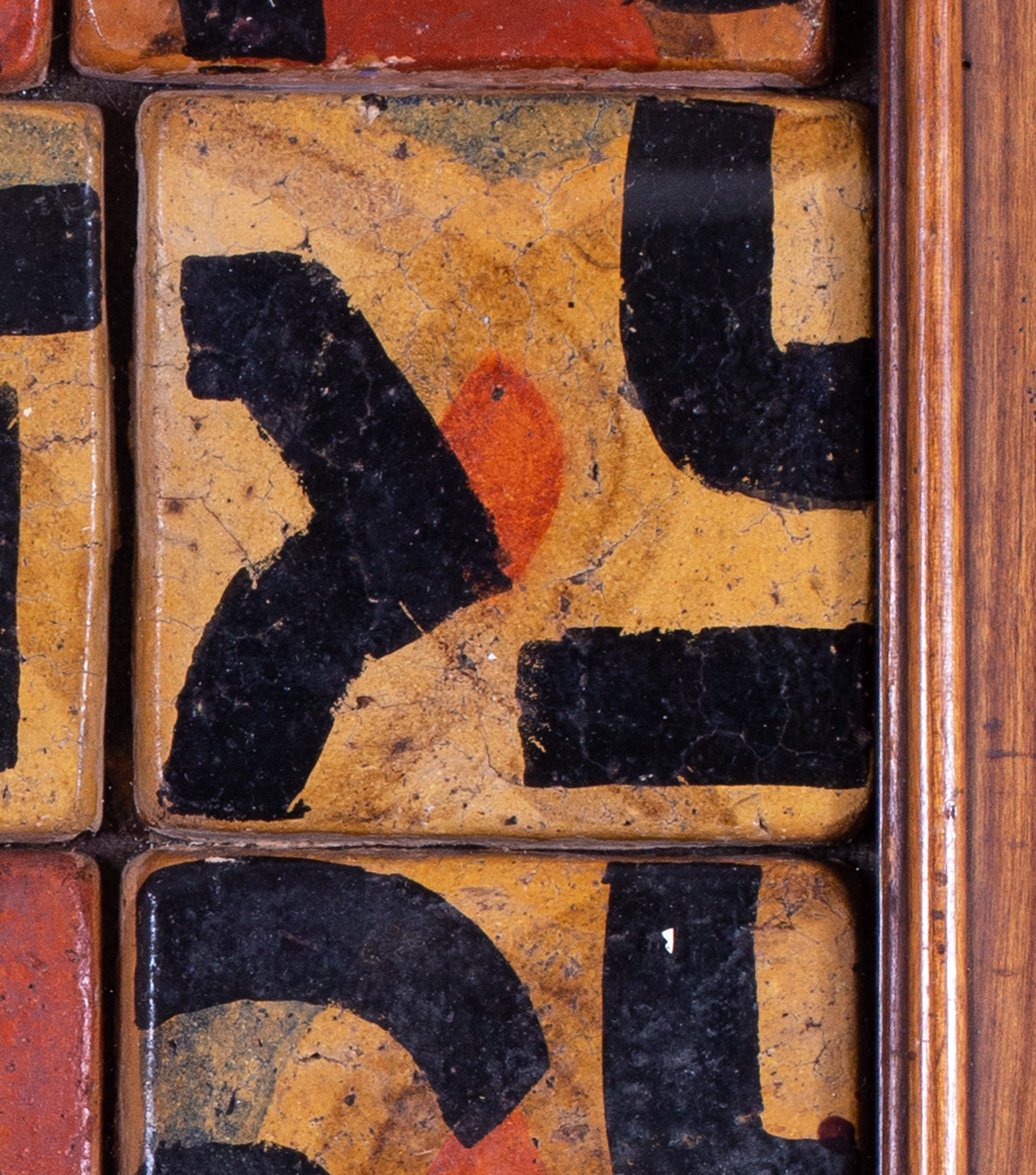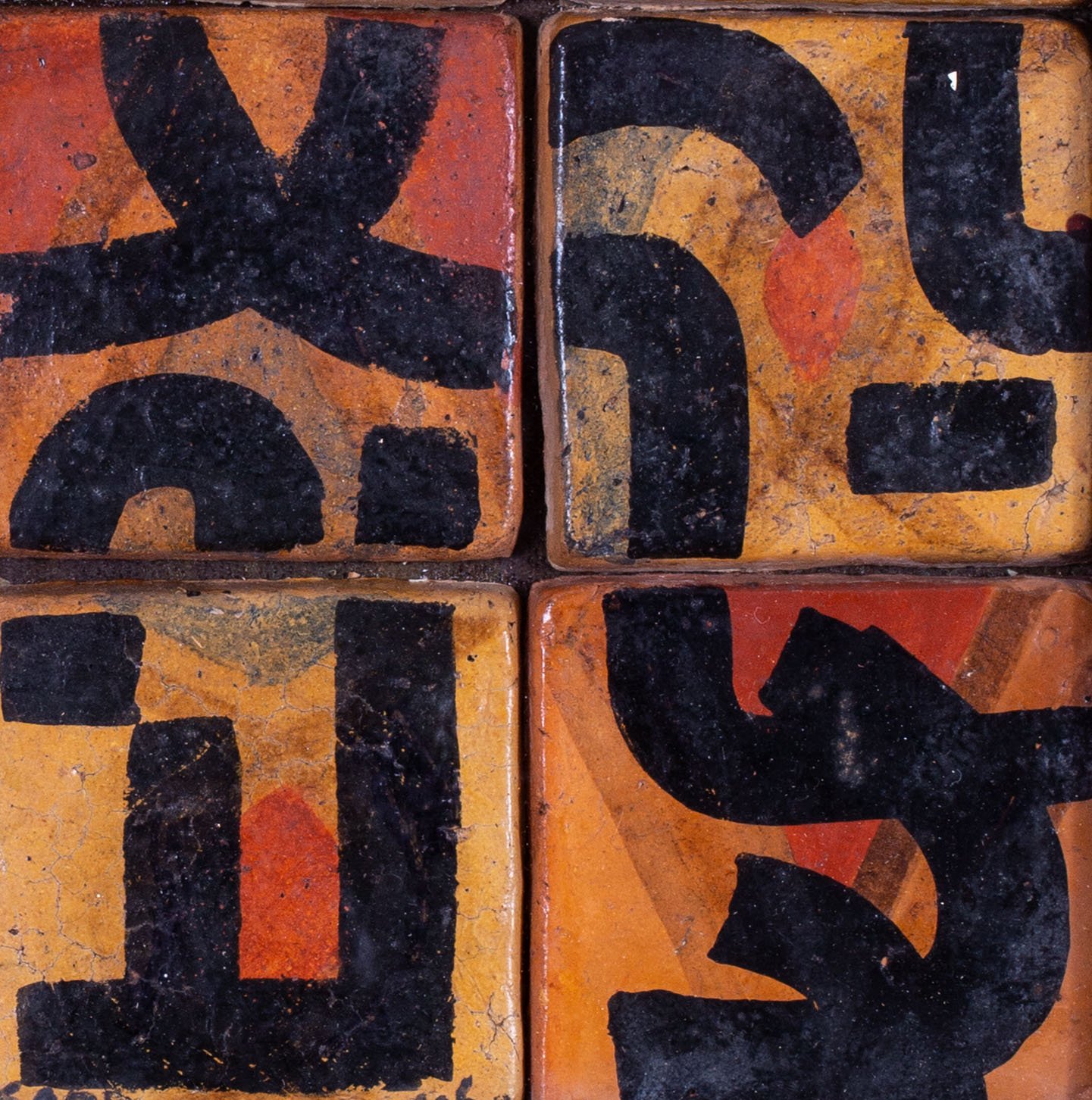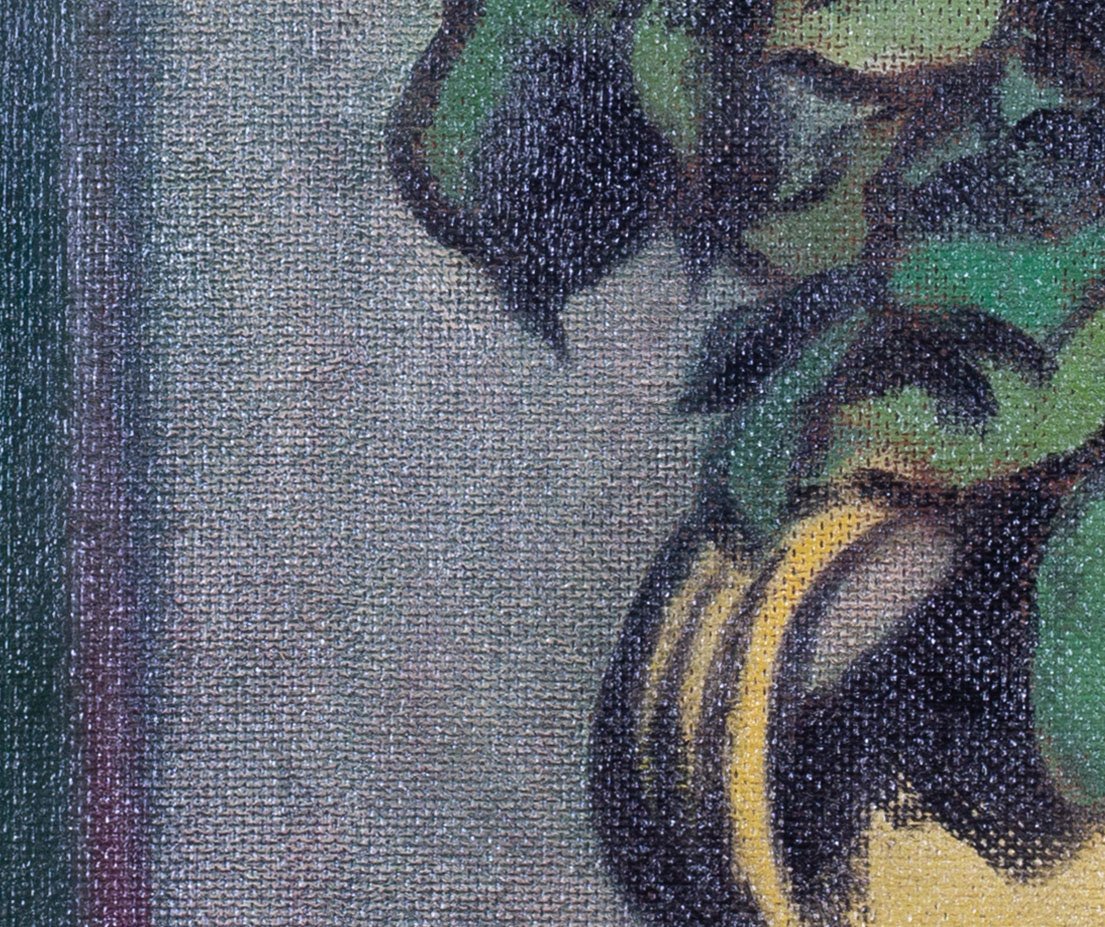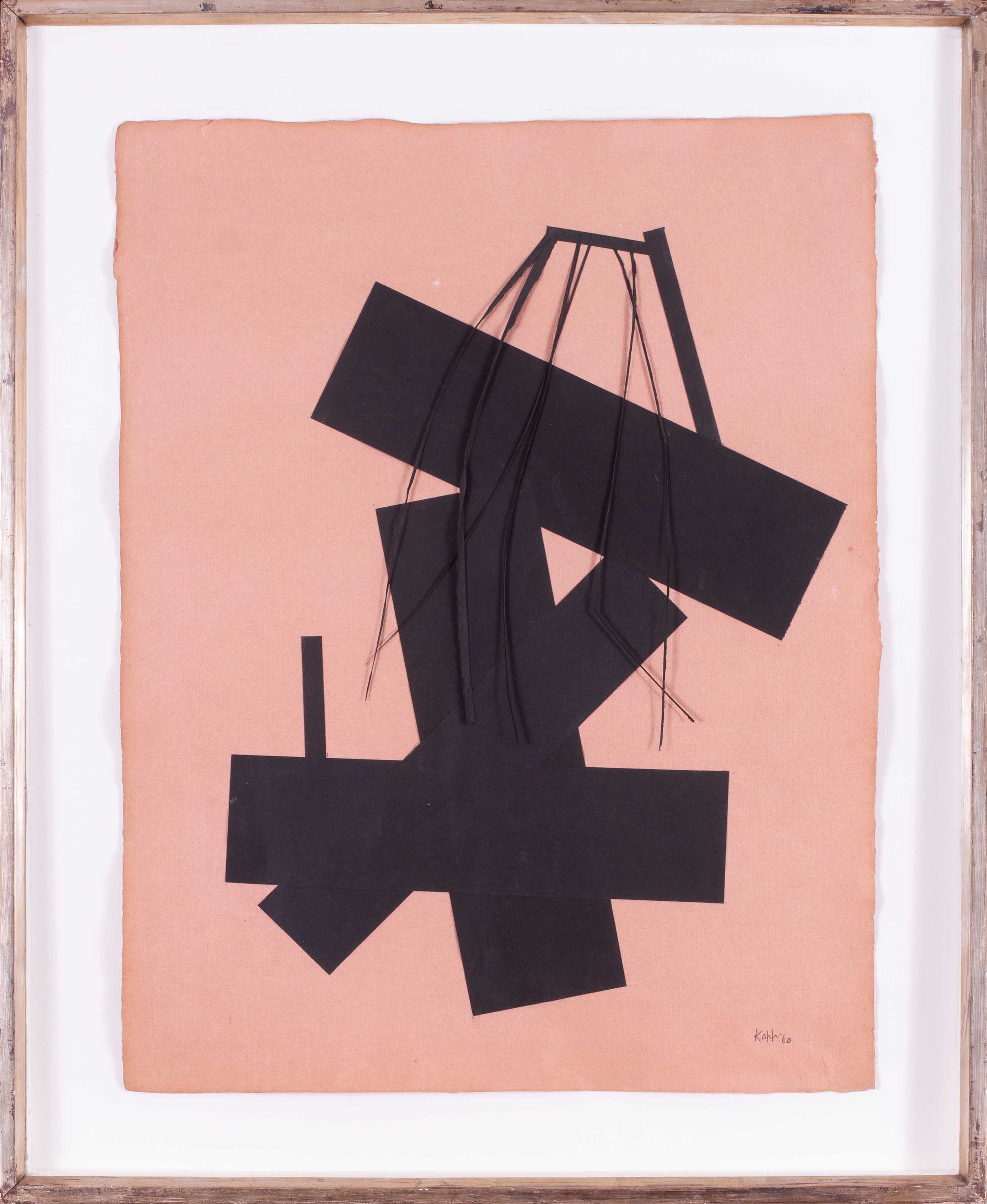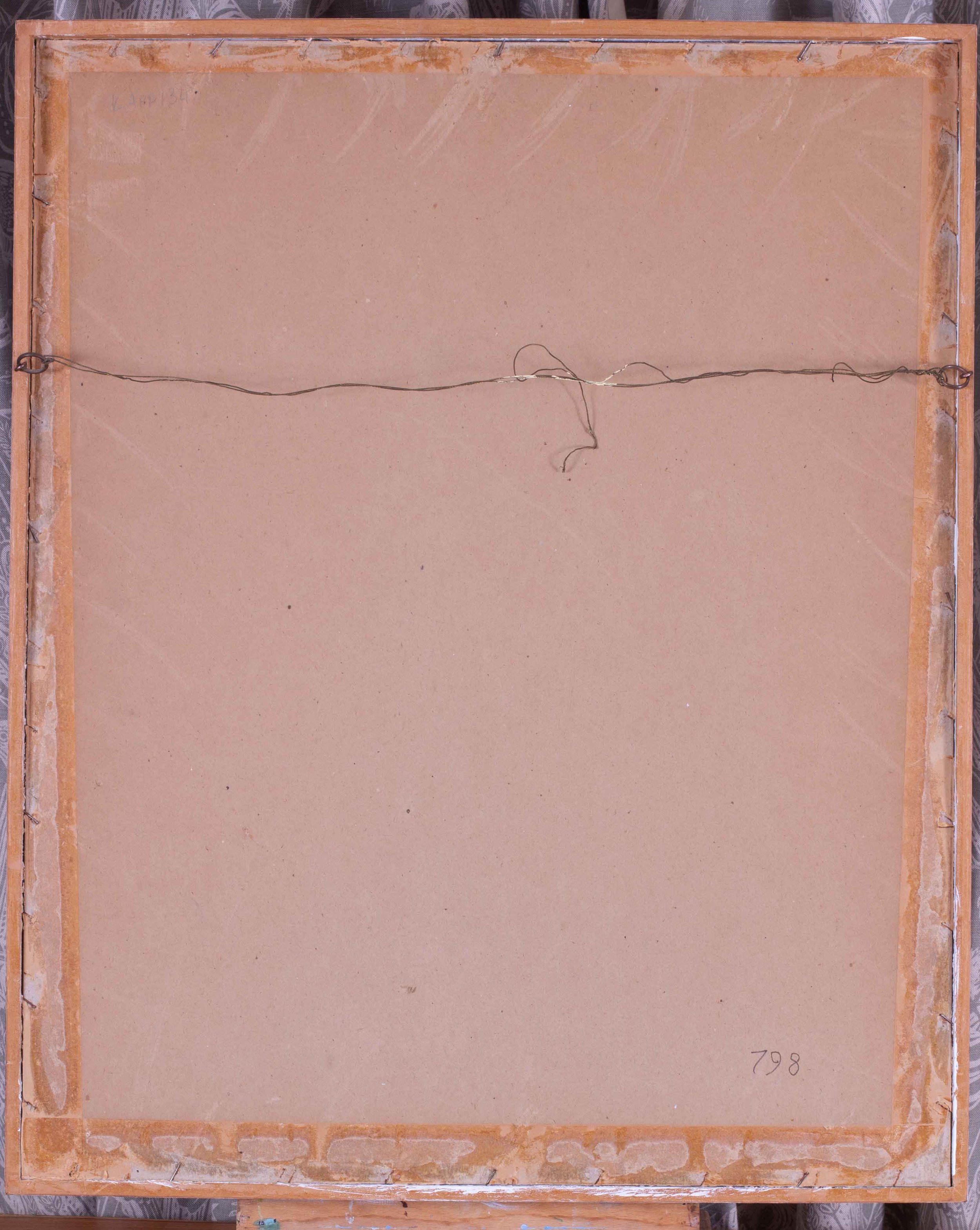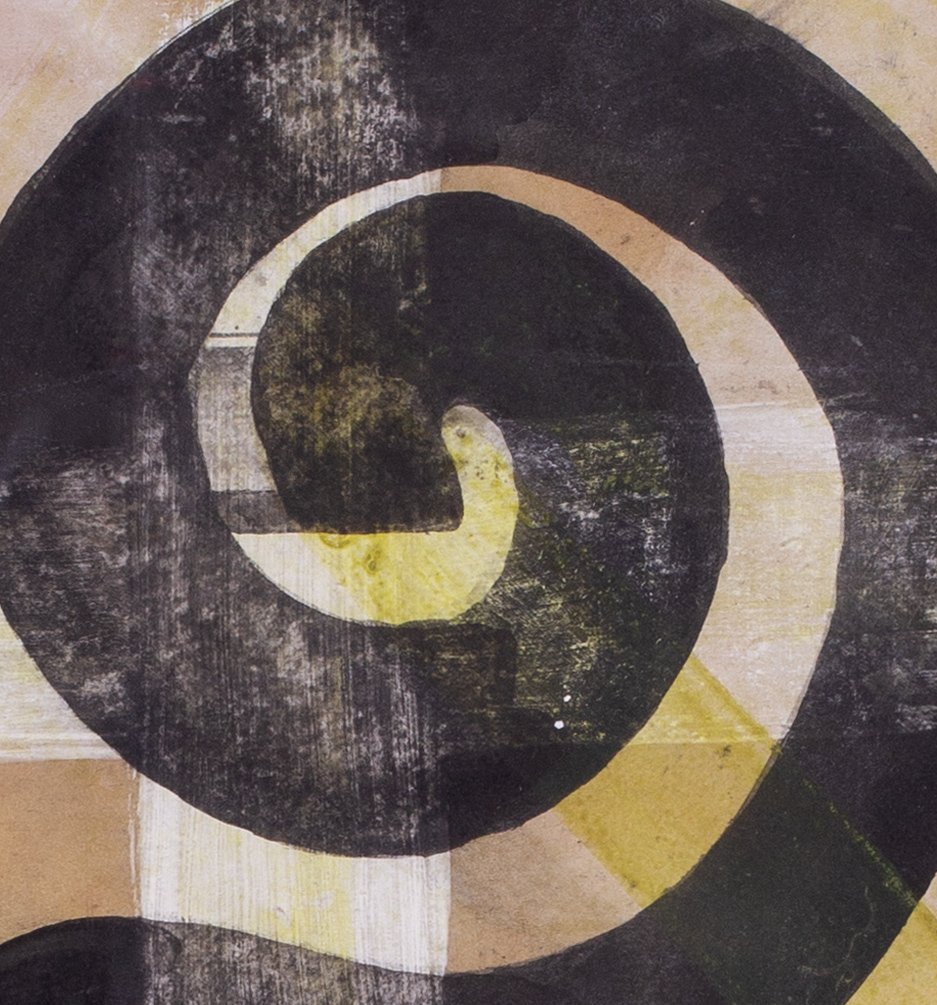EDMOND XAVIER KAPP (British, 1890 - 1978)
Edmond Kapp was born in Islington, London, on 5 November 1890, of American and German Jewish parentage. He gave himself the middle initial ‘X’ – sometimes said to stand for Xavier – to distinguish himself from his father Emil Kapp, who was a wine merchant. However, his parents called him ‘Eddie’ while his wife and friends knew him as ‘Peter’.
During his early years, Kapp was continually ill and, while convalescing, entertained himself by drawing at home. As his health improved, he attended Dame Alice Owen’s School, Islington (1903-10), with periods at Berlin University (1909) and L’Institut Français pour les Etrangers, Paris (1909). He then read Languages at Christ’s College, Cambridge (1910-13), though spent most of his time writing and drawing.
Kapp took a studio in London, and worked intensively until the outbreak of the First World War, contributing to the Daily News, the Onlooker and other periodicals. During the war, he served as a 2nd Lieutenant in the Royal Sussex Regiment on the Western Front, and then in Intelligence, rising to the position of Staff Captain on Haig’s Staff. Finally, he founded and directed the Neutral Press Counter-propaganda Section.
In 1919, Kapp returned to London and, after abortive periods at three art schools, worked alone. In that year, he made his name with an exhibition of caricatures, held at Furst’s Gallery, London, and accompanied by a catalogue introduced by Max Beerbohm. This soon led to contracts with three London periodicals and a book of caricatures, Personalities, published by Martin Secker. Through the 1920s and 30s, his drawings of musicians and other personalities appeared in a wide variety of periodicals, most notably Time & Tide; were collected in further volumes; and were exhibited at the Leicester Galleries. He considered himself to be a ‘character-portraitist’, producing images of psychological not satirical power, and disliking the term ‘caricature’.
Between the wars, Kapp developed other aspects of his artistic talents, the desire to study and the search for subject matter often taking him abroad. For instance, work at the British Academy, Rome, under Antonio Sciortino, and with the American painter, Maurice Sterne, led him to produce his first oils (1923); while an introduction to the League of Nations in Geneva allowed him to use his new-found skill in lithography to produce portraits of twenty-five of its members (1933-35). This expansive and exploratory attitude to his work resulted in an increase in patrons and exhibitions, and in important artistic friendships, notably with Picasso (Picasso sat for Kapp in 1938).
Kapp worked as an Official War Artist during the Second World War, and then as an Official Artist to UNESCO. In the post-war period, he had a studio in Beausoleil, Alpes Maritimes, and explored abstract painting ‘passionately, though without dogmatism’ (Edmond Kapp, London: Whitechapel Art Gallery, 1961, page 8).
Kapp died on 29 October 1978. His sister – the artist Helen Kapp – had died earlier in the same month. The first of his three wives was Yvonne Kapp, biographer of Eleanor Marx and author of the memoir, Time Will Tell. They had visited Beerbohm in Rapallo during their honeymoon in 1923.
His work is represented in numerous public collections, including the National Portrait Gallery; The Barber Institute of Fine Arts (University of Birmingham), the Fitzwilliam Museum (Cambridge) and Manchester Art Gallery; and Albright-Knox Art Gallery (Buffalo).


